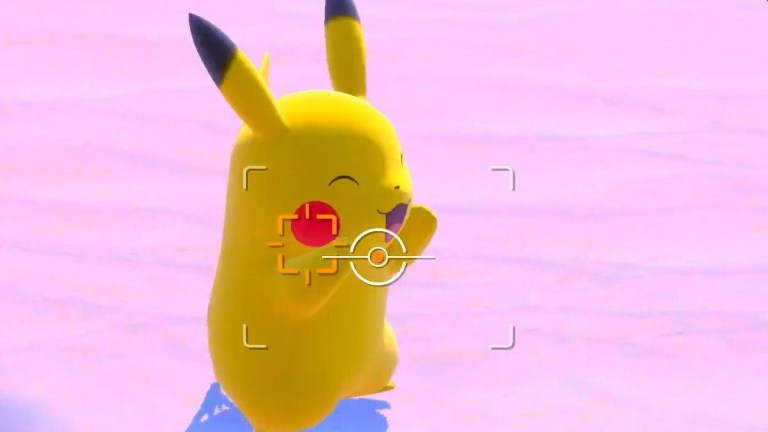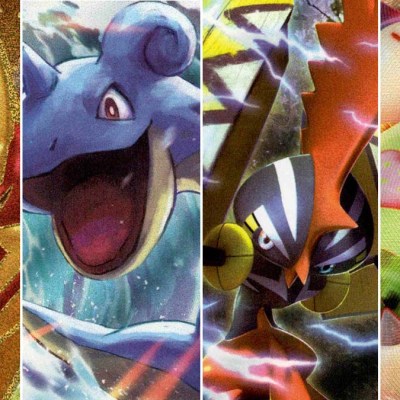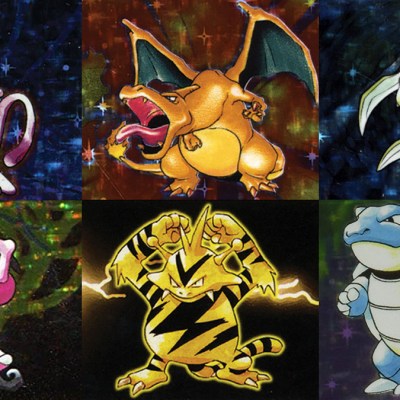How Pokemon Snap Stations Defined the Original N64 Game’s Legacy
With a new Pokemon Snap game on the horizon, we look back on a Blockbuster Video promotion that fans everywhere still remember.

If you didn’t live through the height of the initial Pokemon phenomenon in the late ‘90s, then the hype surrounding the recent reveal of New Pokemon Snap must feel strange. The Pokemon name may have remained strong over the years, but such passion for an N64 game from 1999 that consisted almost entirely of you taking pictures of Pokemon must seem bizarre. The easiest thing to do is just write the whole idea off as a case of nostalgia.
Nostalgia is absolutely a factor when it comes to the legacy of Pokemon Snap. While nostalgia is often more about romanticizing the past than seeing things for what they really were, there’s almost always a tangible value to nostalgia that helps us identify what it is we really long for. For instance, I previously talked about how our fondness for the days of video stores is more about how much we miss a time of necessity, discovery, and community, things that don’t really exist in the age of almost unlimited entertainment options.
Coincidentally, part of our collective fondness for Pokemon Snap can at least partially be traced back to the video store era. After all, one of the most memorable moments of late ’90s pop culture occurred when Nintendo and Blockbuster Video teamed up to bring Pokemon Snap printing stations to rental stores across North America.
We don’t know who first came up with the idea, but we do know the results of this partnership. The Pokemon Snap/Blockbuster promotion centered around photo printing machines, known as Pokemon Snap Stations, which were installed at Blockbuster Video locations starting in November 1999. (Nintendo reached a similar agreement with Lawson stores in Japan and Myer locations in Australia.)
The functionality of the machines themselves was rather simple. You brought in your copy of Pokemon Snap (or a compatible memory device), inserted it into the N64 included in the machine, and used the station to print out stickers of the photos you had taken in the game. For about $3, you got 16 photo stickers that were slightly larger than a postage stamp.
It’s here that we’ve got to throw a dose of reality on your memories of these machines. As some former Blockbuster employees have informed the internet over the years, more than a few people who worked in those stores during the time of this promotion grew to resent those machines. Along with the natural annoyance of large groups of teens and pre-teens coming in just to hang out around the Pokemon Snap Stations, employees also had to deal with how fragile the machines were. Pokemon Snap Stations had a tendency to break down, and it wasn’t always easy to repair them.
There’s also the matter of Pokemon Snap itself. In case you never got the chance to play it, it is true that the core gameplay of Pokemon Snap largely involved you riding around an on-rails cart taking photos of Pokemon that appear in the environment. Remember those Jeeps we saw near the beginning of Jurassic Park that would have carried guests throughout the park while they looked at dinosaurs behind cages? That’s the basic setup of each Pokemon Snap level.
This “tourism simulator” is gamified slightly by Pokemon Snap‘s grading system. Photos are graded based on attributes such as framing, the number of Pokemon in each photo, and special actions the Pokemon may perform in specific situations. The overall goal is to earn enough points with your photos to move on to the next area. You could probably reach the game’s final level in a single sitting if you are so inclined to do so.
You may be wondering what any of this has to do with the core Pokemon games besides the presence of the creatures themselves and a couple other familiar faces and locations. The answer is “Not much.” Pokemon Snap didn’t even start out as a Pokemon game. It was originally imagined as a more generic photography game before Nintendo realized how popular Pokemon had become and decided to attach the Pokemon licence to the project.
So on the surface, you’ve got a fledgling video game project injected with a popular franchise and promoted via a corporate partnership. It sounds like the perfect recipe for some justified cynicism.
Read more
Yet, the great thing about Pokemon Snap is that there is almost nothing cynical about it. The game celebrates the appeal of Pokemon and even turns the simple sprites of the Game Boy originals into colorful, fully-formed 3D characters. Pokemon Snap may have partially been a tourism simulator, but it allowed players to tour a world that they already desperately wanted to be a part of.
Pokemon Snap’s gameplay offered so much more than the average cash-in. For instance, successfully acquiring high enough grades would reward you with new items like Pokemon food or a flute used to wake sleeping Pokemon. These objects could not only be used to capture better pictures of existing Pokemon but to trigger the appearance of entirely new Pokemon and photo scenarios.
Those mechanics encouraged you to explore old areas using new items to trigger fresh possibilities. By taking a design page straight out of the Metroidvania playbook, Pokemon Snap inspired more organic creativity and exploration than you typically get from even larger titles. Pokemon Snap may look like a simple game, but it’s actually a unique experience that is better than you’d expect it to be,
In many ways, the same is true of the Pokemon Snap Station. Kids in the late ‘90s weren’t exactly walking around with high-quality cameras in their pockets (no, the Game Boy Camera sadly doesn’t count). Taking pictures in a video game was still a novelty in the ’90s, long before the rise of today’s standard photo mode, and the fact that you could print those photos out was an especially rare treat.
These Pokemon Snap Stations combined the simple pleasure of huddling with your friends at a carnival photo booth with that same surprising level of creative expression that Pokemon Snap embodied. On Reddit, we even read one story about a kid who would just take scenery shots in the game and use the machine to print them out. The fact that some players found interesting ways to interact with Pokemon Snap beyond just following the in-game objectives shows how Nintendo was able to so effectively tap into the heart of Pokemon fever in the ’90s.
There’s little doubt regarding the true value of those printing stations. The fact of the matter is that video game culture wasn’t as prolific in 1999 as it is in 2020. The Pokemon phenomenon helped change that dynamic somewhat, but most video game appearances in the real world were still largely limited to games gracing store shelves or the odd video game magazine on a newsstand. Even video rental stores typically focused on movies, with games being relegated to a small corner.
Into that world comes this colorful, whirring monolith to a game that previously only existed largely on your TV screen and in conversations with your friends. We bet you smiled when you first saw one of those machines, and we’d even bet that it wasn’t just because of the pictures it let you print. Odds are that your joy had something to do with actually seeing a physical embodiment of something you cared about in a world that (at best) often failed to acknowledge your passions and (at worst) sometimes made you feel bad for caring about those things.
Maybe that’s the lesson we should carry from this particular bit of nostalgia. Even when it’s part of a simple, silly marketing campaign obviously designed to make money, there’s still real value to seeing a representation of what you love, what you care about, and maybe even yourself in the world.
We can’t tell you if New Pokemon Snap will replicate the joy you got from the original, and we’re fairly certain it won’t benefit from another Blockbuster Video promotion. But the feeling you got when you saw something innocent that made you happy benefit from larger acceptance and acknowledgment isn’t one that has to be limited to the past. As you celebrate the release of a new Pokemon Snap game, don’t forget to celebrate that as well.


